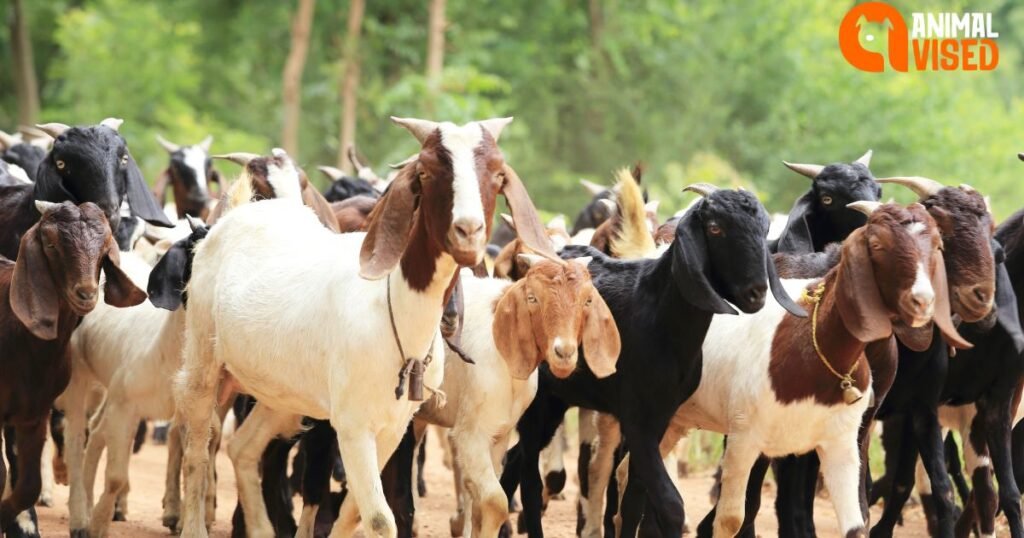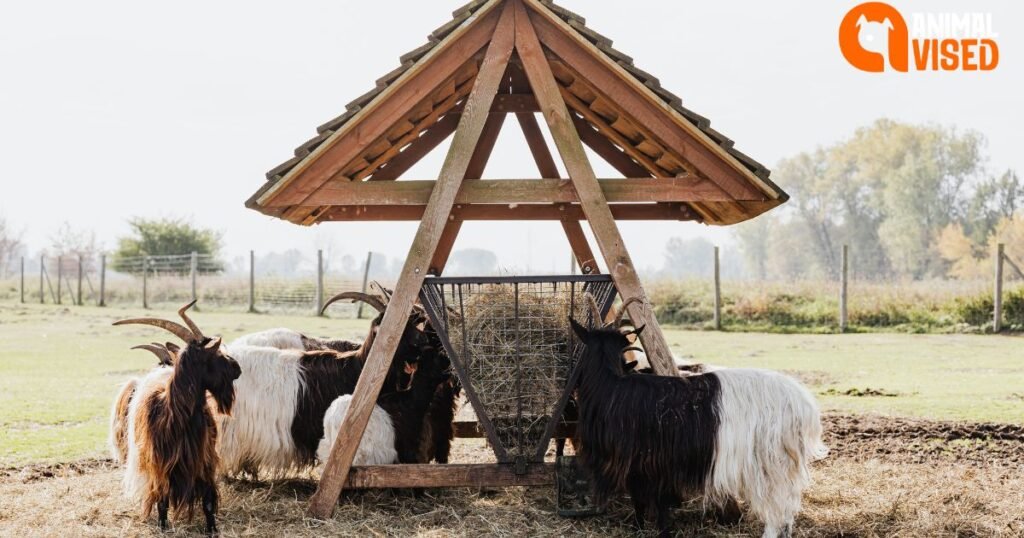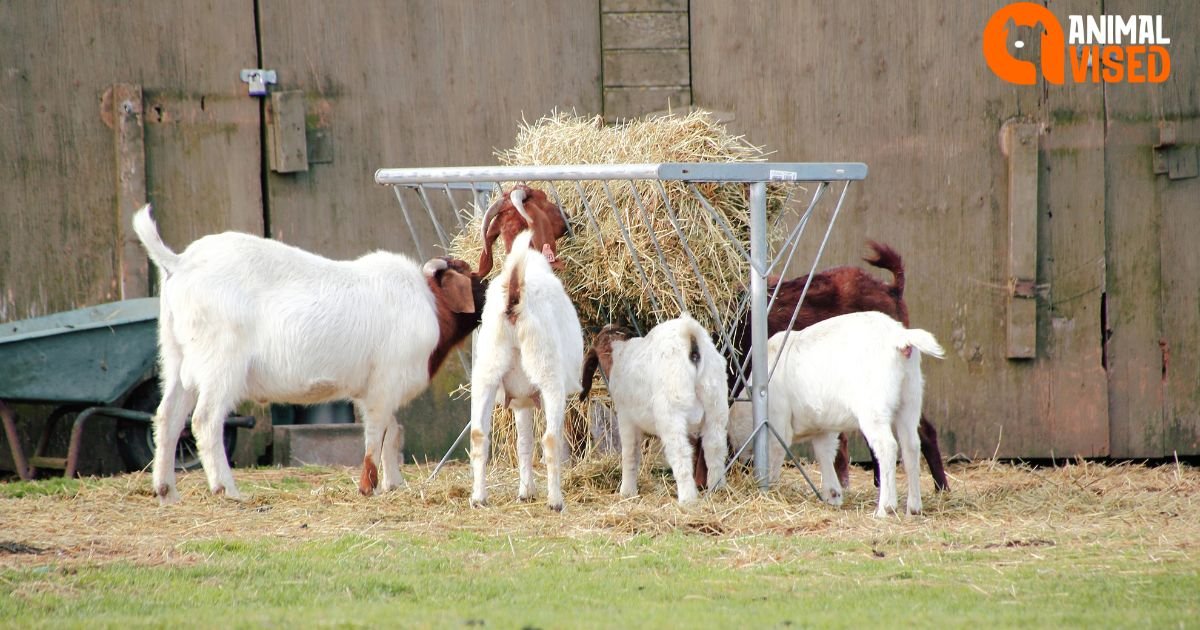Introduction
Welcome to Animal Vised, your go-to source for all things related to caring for animals! In this comprehensive article, we’ll dive into the world of DIY goat feeders, exploring various designs, materials, and tips to ensure your furry friends have a hassle-free and efficient feeding experience. Buckle up as we embark on a journey to create the perfect homemade hay feeder for goats that minimizes waste and keeps your goats happy and healthy.
Section 1: Understanding the Importance of a Good Goat Feeder
As a responsible goat owner, providing your animals with a reliable and efficient feeding system is crucial for their well-being. A well-designed goat feeder not only ensures that your goats have access to their daily rations but also helps to reduce waste and maintain a clean and hygienic environment. Unfortunately, many commercially available feeders can be expensive and may not cater to the specific needs of your herd. This is where DIY goat feeders come into play, offering a cost-effective and customizable solution tailored to your goats’ unique requirements.
Read More: DIY Goat Hay Feeder

Section 2: Benefits of a DIY Goat Feeder
Building your own DIY goat feeder offers numerous advantages over store-bought options. Here are some of the key benefits:
- Cost-effective: By utilizing readily available materials and your own labor, you can save a significant amount of money compared to purchasing a pre-made feeder.
- Customizable: With a DIY goat feeder, you have the freedom to design and build a feeder that perfectly suits the size, number, and specific needs of your herd.
- Reduced Waste: Many DIY goat feeder plans incorporate features that minimize hay or feed waste, ensuring that your goats consume every last bit and saving you money in the long run.
- Durability: By choosing sturdy materials and following proper construction techniques, your homemade hay feeder for goats can be built to withstand the elements and the wear and tear of daily use.
Section 3: DIY Goat Feeder Plans
In this section, we’ll explore several DIY goat feeder plans that cater to different needs and preferences. Each plan will provide detailed instructions, material lists, and helpful tips to ensure a successful build.
Plan 1: The Trough Feeder
This classic design features a long, trough-like structure that allows multiple goats to feed simultaneously. Perfect for larger herds, the trough feeder is easy to construct and can be customized to fit your available space.
Materials Needed:
- Wooden boards (pressure-treated or cedar for outdoor use)
- Wood screws or galvanized nails
- Saw
- Drill
- Sandpaper (optional)
Plan 2: The Corner Feeder
Designed to maximize space in smaller areas or for fewer goats, the corner feeder is a space-saving solution that can be tucked neatly into a corner of your goat pen or barn.
Materials Needed:
- Wooden boards (pressure-treated or cedar for outdoor use)
- Wood screws or galvanized nails
- Saw
- Drill
- Sandpaper (optional)
Plan 3: The No-Waste Hay Feeder
This innovative design incorporates features that minimize hay waste, ensuring that your goats consume every last bit of their rations. With strategically placed barriers and a raised feeding area, this no-waste hay feeder for goats is a must-have for cost-conscious owners.
Materials Needed:
- Wooden boards (pressure-treated or cedar for outdoor use)
- Wood screws or galvanized nails
- Saw
- Drill
- Sandpaper (optional)
- PVC pipes or metal bars (for hay barriers)
Section 4: DIY Goat Feeder Indoor Options
While many DIY goat feeder plans are designed for outdoor use, some goat owners prefer to keep their furry friends indoors, especially during harsh weather conditions. In this section, we’ll explore some DIY goat feeder indoor options that can be easily incorporated into a barn or stable.
Plan 1: The Wall-Mounted Feeder
This space-saving design utilizes vertical wall space, freeing up valuable floor area in your barn or stable. The wall-mounted feeder can be easily adjusted to accommodate different hay or feed types and can be constructed using various materials, such as wood, PVC pipes, or metal.
Materials Needed:
- Wooden boards (pressure-treated or cedar for indoor use)
- Wood screws or galvanized nails
- Saw
- Drill
- Sandpaper (optional)
- Wall-mounting hardware (brackets, screws, etc.)
Plan 2: The Portable Feeder
If you need a versatile feeding solution that can be easily moved around your barn or stable, the portable feeder is an excellent option. This lightweight design incorporates wheels or casters, allowing you to reposition the feeder as needed.
Materials Needed:
- Wooden boards (pressure-treated or cedar for indoor use)
- Wood screws or galvanized nails
- Saw
- Drill
- Sandpaper (optional)
- Casters or wheels

Section 5: DIY Goat Feeder for Sale
While building your own DIY goat feeder can be a rewarding and cost-effective option, some goat owners may prefer to purchase a pre-made feeder. In this section, we’ll explore some DIY goat feeder for sale options available online or through local sellers.
Option 1: Online Marketplaces
Websites like Etsy, Amazon Handmade, and various online farm supply stores offer a wide range of DIY goat feeders for sale, often crafted by skilled woodworkers or artisans. These feeders come in various designs, sizes, and materials, ensuring that you can find a perfect match for your specific needs.
Option 2: Local Sellers
In many rural or farming communities, you may find local woodworkers, craftsmen, or even fellow goat owners who offer DIY goat feeders for sale. These sellers often use locally sourced materials and can customize the feeders to your exact specifications, providing a unique and personalized touch.
Section 6: Tips and Considerations
When embarking on your DIY goat feeder project or purchasing a pre-made option, keep these tips and considerations in mind:
- Durability: Choose weather-resistant materials like pressure-treated wood, cedar, or galvanized metal to ensure your feeder can withstand the elements and frequent use.
- Ease of Cleaning: Incorporate features that make cleaning and maintaining your feeder a breeze, such as removable trays or smooth, wipeable surfaces.
- Safety: Ensure that your DIY goat feeder design has no sharp edges or protruding components that could potentially harm your goats.
- Accessibility: Position your feeder at an appropriate height to prevent strain on your goats’ necks and allow for comfortable feeding.
- Waste Reduction: Explore features like hay barriers, raised feeding areas, or partitioned sections to minimize waste and maximize the consumption of hay or feed.
Section 7: Advanced DIY Goat Feeder Designs
For those looking to take their DIY goat feeder to the next level, we’ll explore some more advanced designs that incorporate innovative features and thoughtful engineering.
Plan 1: The Automatic Hay Feeder
This cutting-edge design takes the hassle out of feeding your goats by automatically dispensing hay or feed at pre-set intervals. By utilizing a simple motorized system, you can ensure that your goats always have a fresh supply of hay without the need for manual intervention.
Materials Needed:
- Wooden boards (pressure-treated or cedar for outdoor use)
- Wood screws or galvanized nails
- Saw
- Drill
- Sandpaper (optional)
- Small electric motor or gear system
- Timer or programmable controller
- Power source (battery or electrical outlet)
Plan 2: The Elevated Feeder
Designed with the comfort of your goats in mind, the elevated feeder positions the feeding area at an optimal height, reducing strain on their necks and backs. This design is particularly beneficial for larger goats or those with mobility issues, ensuring they can access their food with ease.
Materials Needed:
- Wooden boards (pressure-treated or cedar for outdoor use)
- Wood screws or galvanized nails
- Saw
- Drill
- Sandpaper (optional)
- Sturdy legs or supports (metal or treated wood)
Section 8: Incorporating Enrichment Features
Goats are intelligent and curious animals that thrive on mental stimulation. By incorporating enrichment features into your DIY goat feeder, you can promote natural foraging behaviors and provide a more engaging feeding experience for your furry friends.
Plan 1: The Puzzle Feeder
This innovative design challenges your goats’ problem-solving skills by requiring them to manipulate various components or obstacles to access their hay or feed. This not only keeps their minds active but also encourages natural foraging behaviors.
Materials Needed:
- Wooden boards (pressure-treated or cedar for outdoor use)
- Wood screws or galvanized nails
- Saw
- Drill
- Sandpaper (optional)
- Movable components (wooden blocks, pipes, or other safe materials)
Plan 2: The Treat Dispenser
Combine feeding with fun by incorporating a treat dispenser into your DIY goat feeder. This feature allows you to reward your goats with healthy treats or supplements, encouraging positive reinforcement and strengthening the bond between you and your herd.
Materials Needed:
- Wooden boards (pressure-treated or cedar for outdoor use)
- Wood screws or galvanized nails
- Saw
- Drill
- Sandpaper (optional)
- Treat dispenser mechanism (e.g., PVC pipe with removable cap)
Section 9: Maintenance and Cleaning
Proper maintenance and cleaning are essential to ensure the longevity and hygiene of your DIY goat feeder. Here are some tips to keep in mind:
- Regular Inspections: Periodically inspect your feeder for any signs of wear, damage, or potential hazards. Address any issues promptly to prevent accidents or injuries.
- Cleaning Routine: Establish a consistent cleaning routine to remove any leftover hay, feed, or debris from your feeder. This will help prevent the growth of harmful bacteria and mold.
- Disinfection: In addition to regular cleaning, it’s important to disinfect your DIY goat feeder periodically. Use a safe, goat-friendly disinfectant or a diluted bleach solution to kill any remaining germs or pathogens.
- Replacement Parts: Over time, certain components of your feeder may need to be replaced due to wear and tear. Have a plan in place to easily obtain and replace any necessary parts to ensure the continued functionality of your feeder.

Section 10: Goat Feeder Safety Considerations
While DIY goat feeders offer numerous benefits, it’s crucial to prioritize safety to protect your beloved goats from potential harm. Here are some important safety considerations to keep in mind:
- Eliminate Sharp Edges: Carefully sand or file down any sharp edges or protruding components that could potentially cause injury to your goats.
- Secure Footing: Ensure that your feeder is placed on a level, stable surface to prevent tipping or instability, which could lead to accidents.
- Avoid Toxic Materials: When selecting materials for your DIY goat feeder, avoid using any substances that could be toxic or harmful if ingested by your goats, such as certain types of treated wood or lead-based paints.
- Supervise Feeding Times: During feeding times, it’s advisable to supervise your goats to ensure that no accidents or conflicts occur, especially if you have a larger herd or if you’ve introduced a new feeder design.
- Goat-Proof Design: Consider the natural curiosity and mischievous nature of goats when designing your feeder. Incorporate features that prevent them from climbing, jumping, or escaping from the feeding area.
Read More: DIY Goat Feeder
Conclusion
Building or purchasing a DIY goat feeder is a rewarding and practical solution for goat owners. From classic trough designs to innovative automatic feeders, the possibilities are endless. By incorporating enrichment features, prioritizing safety, and practicing proper maintenance, you can create a feeding system that not only meets the nutritional needs of your goats but also promotes their mental stimulation and overall well-being. Remember, at Animal Vised, we’re dedicated to providing you with the knowledge and resources you need to become a knowledgeable and responsible goat










